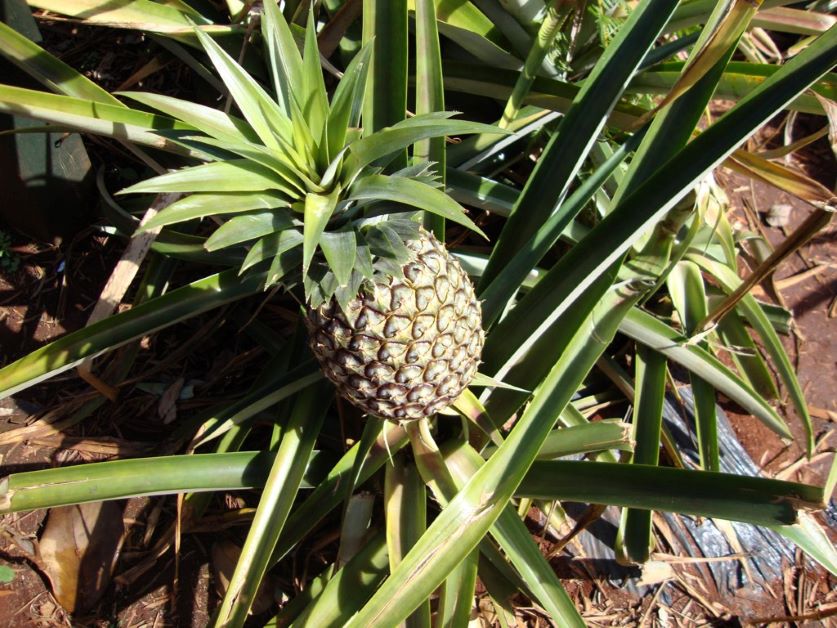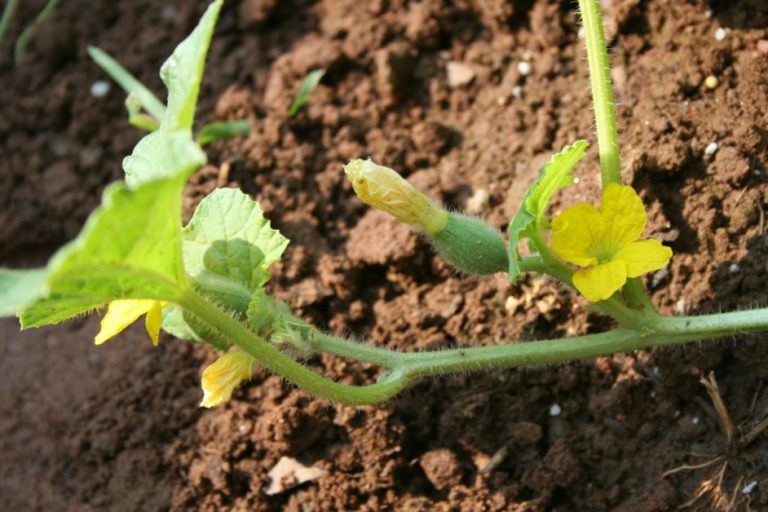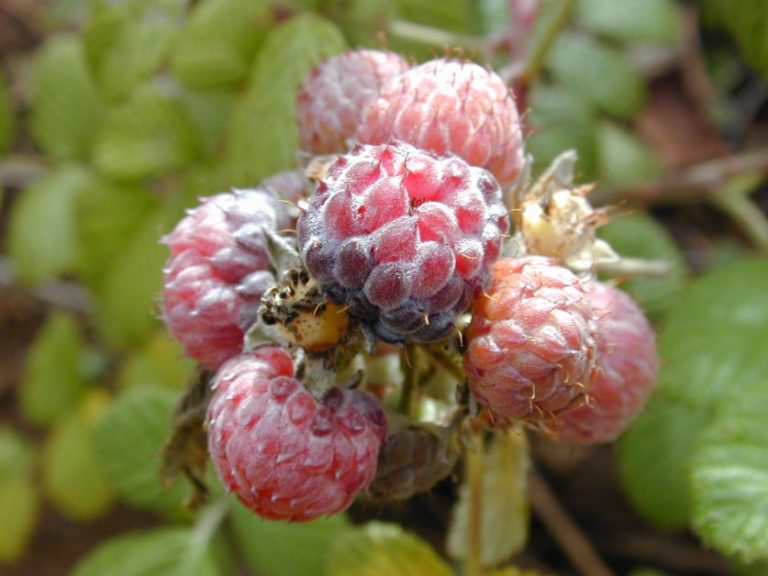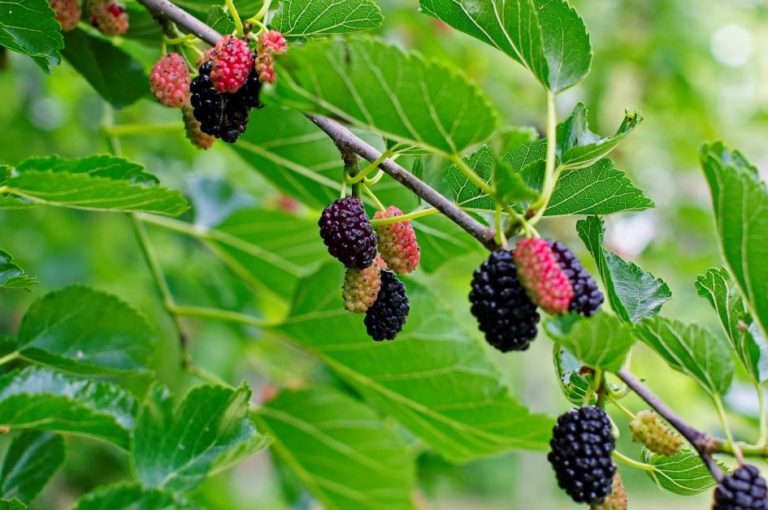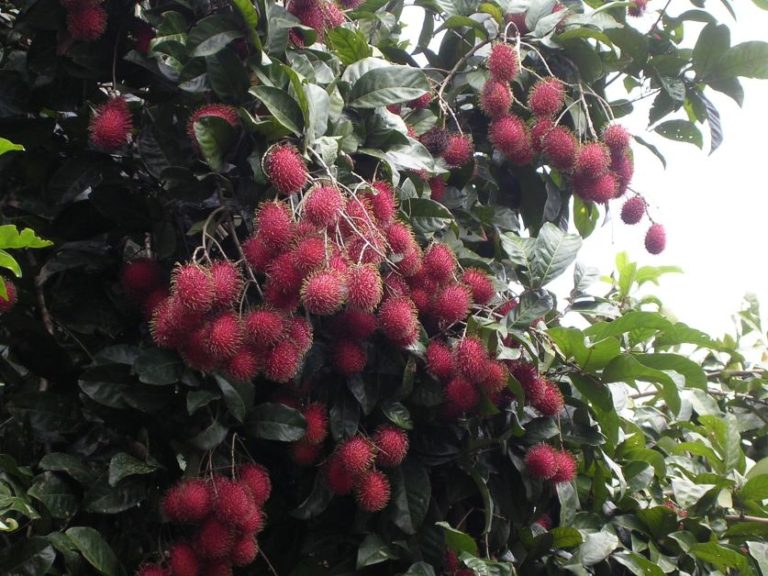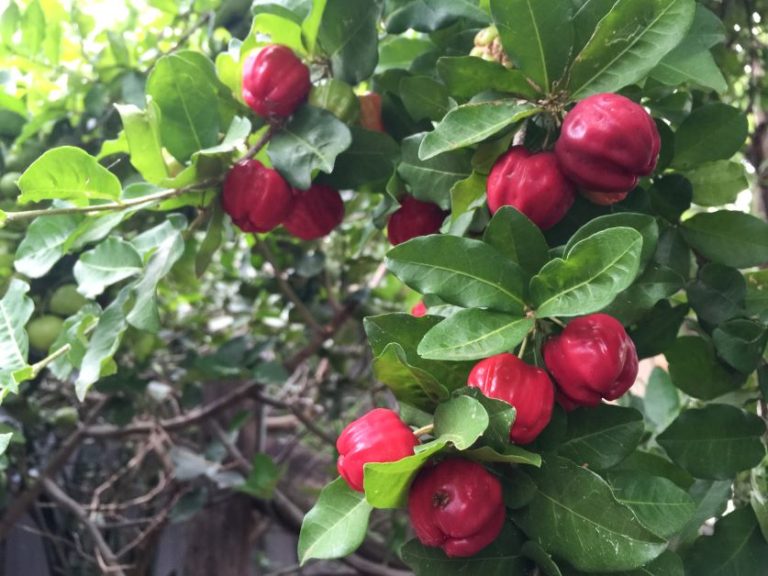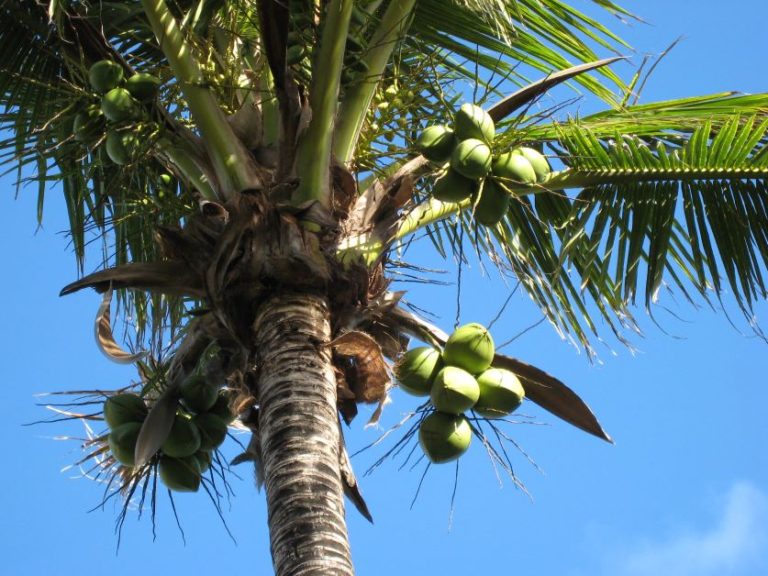How to Grow a Pineapple Top
The hardest thing about learning how to grow a pineapple top isn’t the growing itself, it’s the patience it takes waiting for the fruit to form. You don’t even need seeds – you can grow a pineapple plant from the top of the pineapple you buy at the grocery store!
While homegrown pineapple is sometimes smaller than the fruit you’d buy at the store, they’re PACKED with flavor. I don’t know about you, but I’d rather have a smallish pineapple that’s super sweet than a big one that’s bland.
Pineapples make a pretty houseplant, too. I like to use them as a border plant in my yard. It looks ornamental and serves a tasty purpose. As an urban gardener, it’s important that I use my small space as strategically as possible.
How to Pick a Healthy Pineapple
The technical term for the top of a pineapple is the crown. The first thing you need to do before planting your pineapple crown is to choose a ripe, healthy pineapple from the grocery store. Smell the bottom of the pineapple – if it smells sweet, it’s ripe. The pineapple should also be partly yellow.
Don’t choose a pineapple that has a lot of brown leaves, and inspect the fruit for mold or mushy spots.
Always check to see if the pineapple crown is viable before taking it home to plant. Some pineapple growers will drill out the very center of the crown to stop it from growing when it’s replanted. Make sure that there are leaves growing from the very center of the crown and you should be good to go.
How to Prepare Your Pineapple Top
Preparing your pineapple crown for planting is simple. Grab the crown with one hand and hold the fruit with the other. Give the crown a twist and pull. You may need to work at it a little, but it will pop off. The crown can be sharp and spiky, so you may want to wear gardening gloves.
Once the crown is off the pineapple, remove any leftover fruit from the bottom. This will help stop your crown from rotting. Set the crown aside and let it dry out for a day or two before planting.
How to Grow Pineapple in the Ground
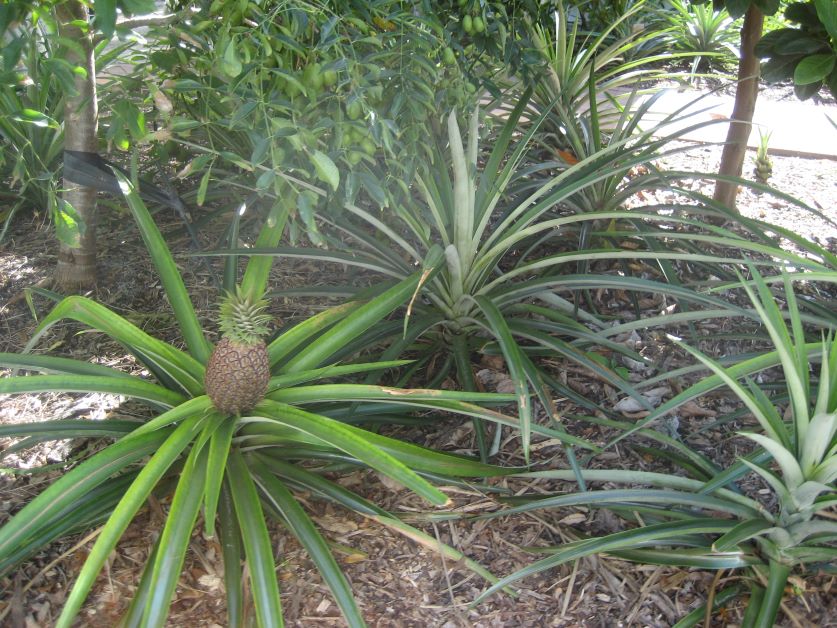 |
| Photo Credit: David Herman |
If you’re like me and live in zone 9B or below, then growing outside in the ground is the easiest way to grow a pineapple.
Pick a spot in full sun and dig a hole 3 to 4 inches deep and 3 to 4 inches wide. The hole doesn’t have to be very deep – pineapples have a shallow root system.
Once your hole is dug, put your pineapple crown inside and bury it up to where the foliage starts. You usually don’t need to add compost or amend the soil. After it’s planted, water it in.
If you’d like, mulch in your pineapple using pine straw or wood chips. This helps cut down on weeds and will keep moisture in. Be sure to give a couple of inches of space between your pineapple and where the mulch starts, otherwise your pineapple might rot.
Pineapple plants can grow to be quite big, so give each pineapple 24 to 36 inches of space. The more space you give your pineapple plant, the bigger the fruit.
How to Grow Pineapple in a Pot
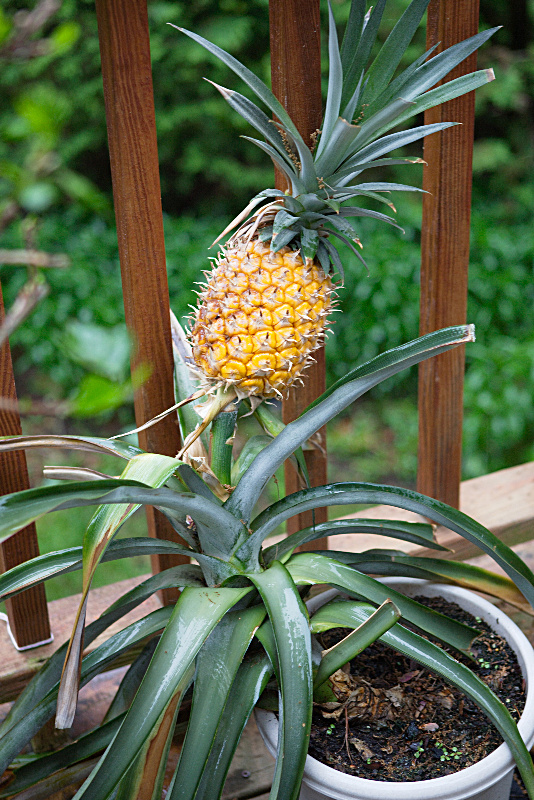 |
| Photo Credit:Sergei Delov |
Gardeners living in cool-weather climates will need to grow their pineapples in a pot. That way, you can bring it indoors when the temperatures drop.
The bigger the pot, the bigger your plant will be. The bigger your plant will be, the bigger your fruit. I like to use a 5-gallon container for my potted pineapple, but they’ll do fine in something smaller. Container size when growing pineapple in a pot is largely a personal preference. The most important thing is that your container has enough drainage holes.
Fill your pot with a well-draining potting mix. Dig a small hole in the center of the soil and bury your pineapple top up to where the foliage starts. Water your pineapple in.
Can You Grow Pineapple in Water?
Some people root their pineapple crowns in water, but I’ve had little success with this method. My crown tends to rot when I try to grow in water, so I prefer to grow directly in the soil.
If you want to give water growing a shot, then fill a jar with water and put the crown in the glass. The crown shouldn’t be completely submerged – just the very bottom of the crown should touch the water.
Put your jar in a sunny spot, and change the water every few days. Roots should form in 3 to 5 weeks. At that point, transplant your crown into the ground or a container.
Growing Pineapple on the Coast
If you live on the coast or in a flood-prone area, you should plant your pineapple on a mound. Pineapple tends to rot if it’s waterlogged and a mound will help keep your pineapple plant above the floodplain.
Using the soil already in your yard, build a mound that’s about 3 feet high and 4 feet wide. Dig a small hole in the middle of the mound that’s 3 to 4 inches deep, plant your pineapple crown, and water it in.
If you live on the coast, you should know that pineapple isn’t especially salt tolerant. Constant salt spray will cause black spots to appear on the foliage of your plant.
Pineapple Growing Conditions
Pineapples are a member of the bromeliad family. Bromeliads are tropical plants, and that means they need 2 things: heat and humidity.
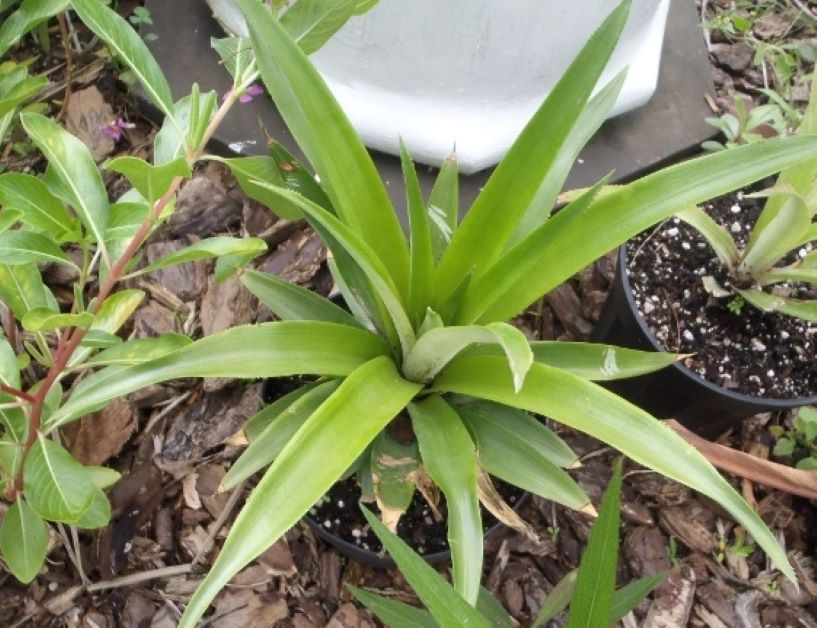 |
| Photo Credit: Martin |
Temperature
Pineapples are cold-sensitive and don’t tolerate freezing temperatures. They will also grow slower in temperatures lower than 60F. The ideal temperature range for pineapple is 68F to 86F.
In my part of Central Florida, nightly temperatures dip down to freezing a couple of times a year. When this happens, I cover my pineapples with a tarp or frost blanket to protect them.
Light
Pineapples are a full sun plant.
Water
Although pineapples are tolerant to drought, they grow slower if it’s too dry. Pineapples like a fair amount of water, but they are susceptible to rotting when kept too wet. Keep your pineapple moist, but allow it to dry out in-between watering.
If you’re in Florida, don’t water your pineapple during the summer rainy season, and water it once or twice a week during the dry season.
Soil
As long as it’s well-draining, pineapple isn’t very picky about the soil it’s grown in. It prefers partly sandy, partly loamy soil, but it’ll do okay in very sandy, non-fertile soil as long as you fertilize it. Pineapple also prefers neutral to slightly acidic soil.
Fertilizer
If you’re growing pineapple in extremely sandy or non-fertile soil, you should give it organic 10-10-10 fertilizer. Feed your pineapple every 8 weeks when the plant is small and more often as it grows. Follow the instructions on the container to make sure you don’t overfeed and burn your pineapple plant.
How Long to Grow Pineapple
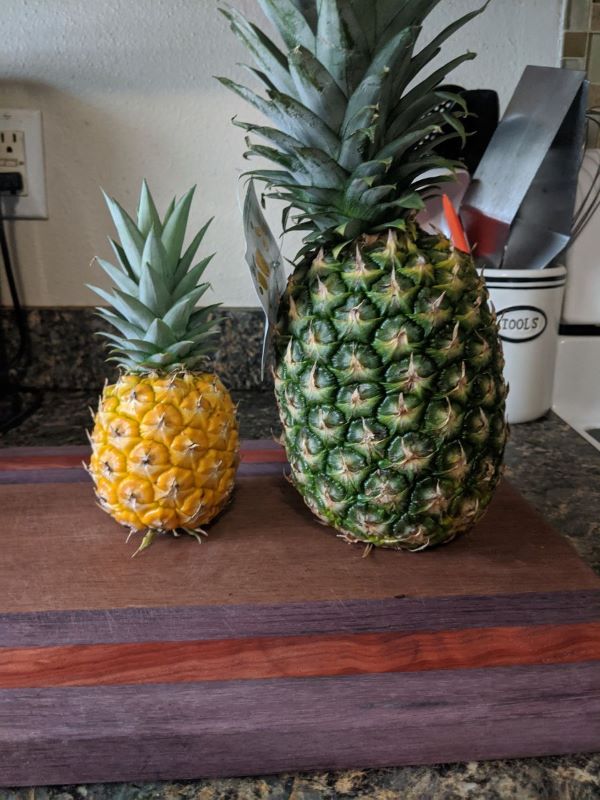 |
| My homegrown pineapple compared to store-bought |
Pineapple takes a long time to produce fruit. Usually, it takes 1.5 to 2+ years for a pineapple to flower, and another 5 to 7 months for the flower to turn into fruit. This means that it can take 3 years for your pineapple crown to give you a pineapple fruit.
How well you’re able to reproduce a tropical climate also determines how quickly your pineapple plant will give you fruit. A pineapple plant grown outdoors in South Florida will produce fruit quicker than a pineapple kept in a pot in Michigan, for instance.
Harvest your pineapple when it starts smelling sweet. It should also be mostly yellow instead of green. If you need to pick your pineapple a little early because of cold weather, then you can harvest it when it’s halfway green and let it ripen on your kitchen counter. It’s best to let it ripen on the plant if you can, though.
When harvesting, use a pair of sharp, clean scissors and cut the pineapple off of the base of the stem. Leave the rest of the plant in the ground – it’s possible to grow another round of pineapple as long as you don’t pull up the entire plant.
How Many Pineapples Will One Plant Produce?
Some sources say that a pineapple plant will only produce one fruit in its lifetime, but this isn’t true. A pineapple plant will produce up to two fruit per plant – the first harvest is called the plant crop and the second harvest is called the ratoon crop.
The pineapple from the plant crop comes from the pineapple plant itself. The pineapple from the ratoon crop is produced from the sucker.
After you harvest your pineapple, you should see some new growth in the middle or side of the plant. This is called the sucker. The sucker will continue to grow and produce fruit after your first harvest.
After you pick your first pineapple, cut back the old leaves and leave the new growth (the sucker). The sucker will grow into its own plant and so you should see another fruit in about 14 months.
When your pineapple sets fruit, may also see some shoots coming off the sides of the pineapple itself. These are called slips. Carefully pull the slips off of the plant because they draw energy away from the fruit. You can replant the slips, and they’ll also give you fruit in about 14 months.
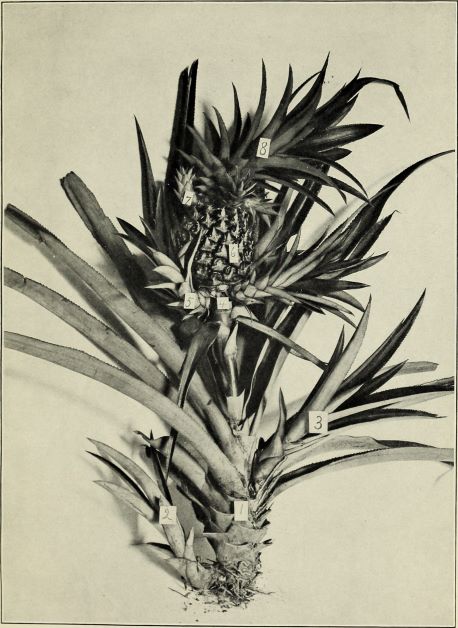 |
| Photo Credit: Henricksen,H. C. (Henrick Christian), 1869-;Iorns, M. J. (Martin J.), No restrictions, viaWikimedia Commons |
Troubleshooting
Pineapple pests
Mealybugs
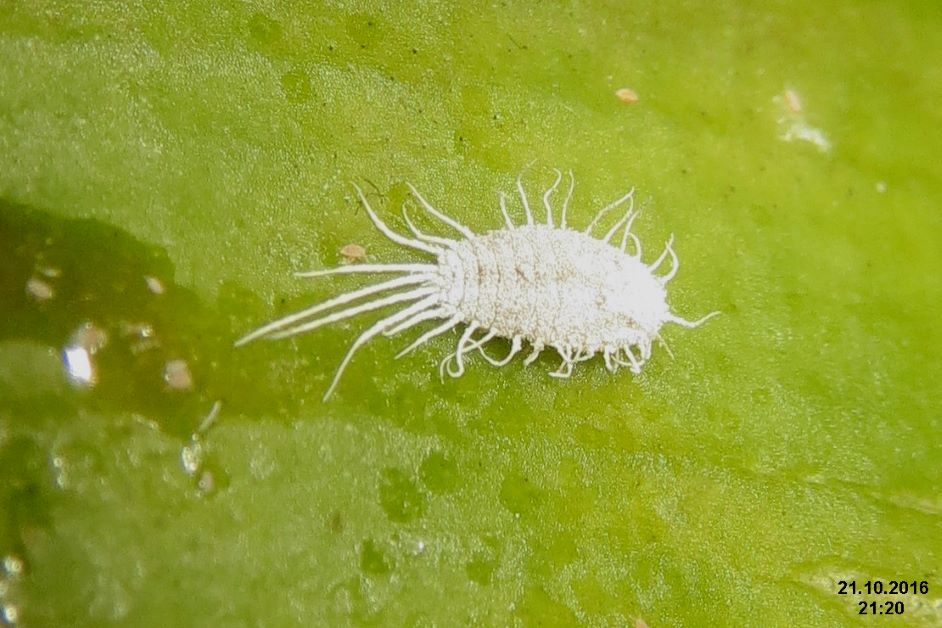 |
| Photo Credit: David Short |
Mealybugs like to hide under the leaves of your pineapple plant. If you see signs of mealybugs, treat with organic insecticidal soap.
Scale
 |
| Photo Credit: Vantz222 |
Scale also tends to hide under leaves and also on the stem of your plant. They are especially annoying because they have a hard exoskeleton and don’t respond to insecticides. Using the blunt edge of a knife, carefully scrape scale off your plant. You can also try to rub the scale off using a paper towel soaked in rubbing alcohol.
How to Protect Your Pineapple Plant from Animals
Raccoons, Possums, Birds, Squirrels
The sweet smell of a ripening pineapple attracts many different mammals and birds.
As your pineapple matures, you may want to create a cage for it to keep unwanted critters away from your fruit. Take my word – it’s heartbreaking to wait 3 years for a pineapple to form, only to lose it to a greedy raccoon.
Cut a piece of hardware cloth or chicken wire into a piece that’s 6 to 8 inches wide and 6 to 8 inches tall. You may need to adjust your measurements depending on the size of your pineapple.
Take one end of the wire and attach it to the other side with zip ties, forming a tube shape. Slip the tube over your fruit to give it a little cage. You should only have to do this for the very end of the maturing process when the fruit starts smelling sweet.
Pineapple diseases
Root rot
Root rot happens when your pineapple plant stays too wet for too long. It’s probably the most common problem for the home gardener.
Signs of pineapple root rot include brown leaves, stunted growth, and a generally unhealthy-looking plant.
Lawn care damage
Be careful not to use weed whackers or lawnmowers too close to any pineapple plants growing in your landscape. Pineapple plants get bushy, and it’s easy to accidentally nick a pineapple plant when cutting the grass.
First photo credit: Mark

